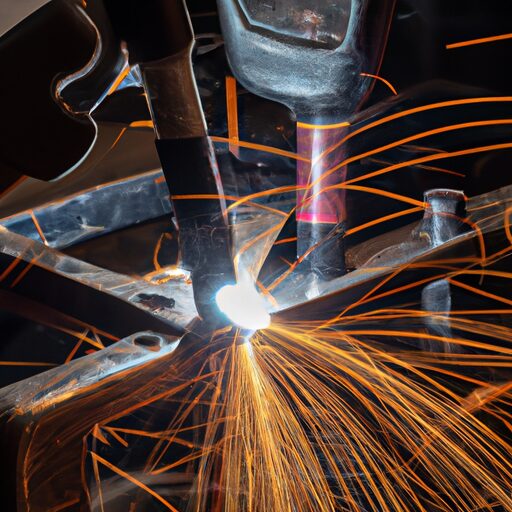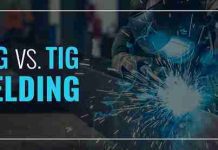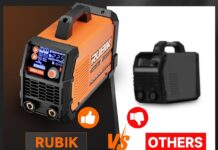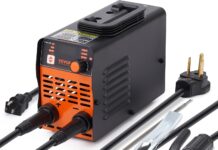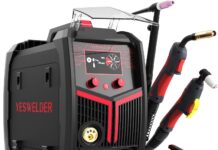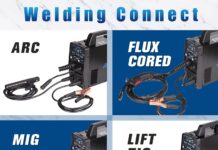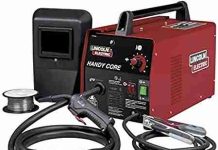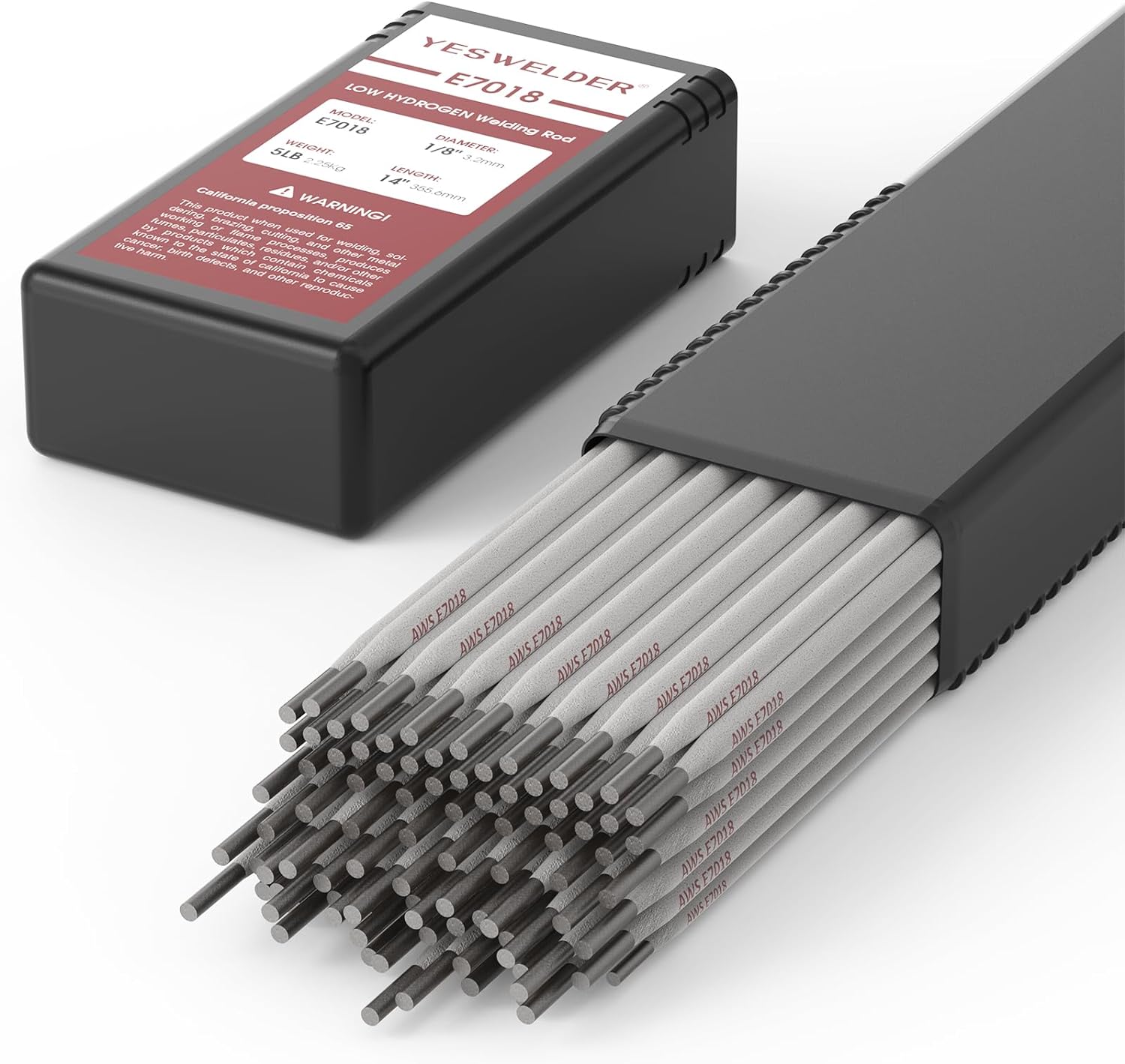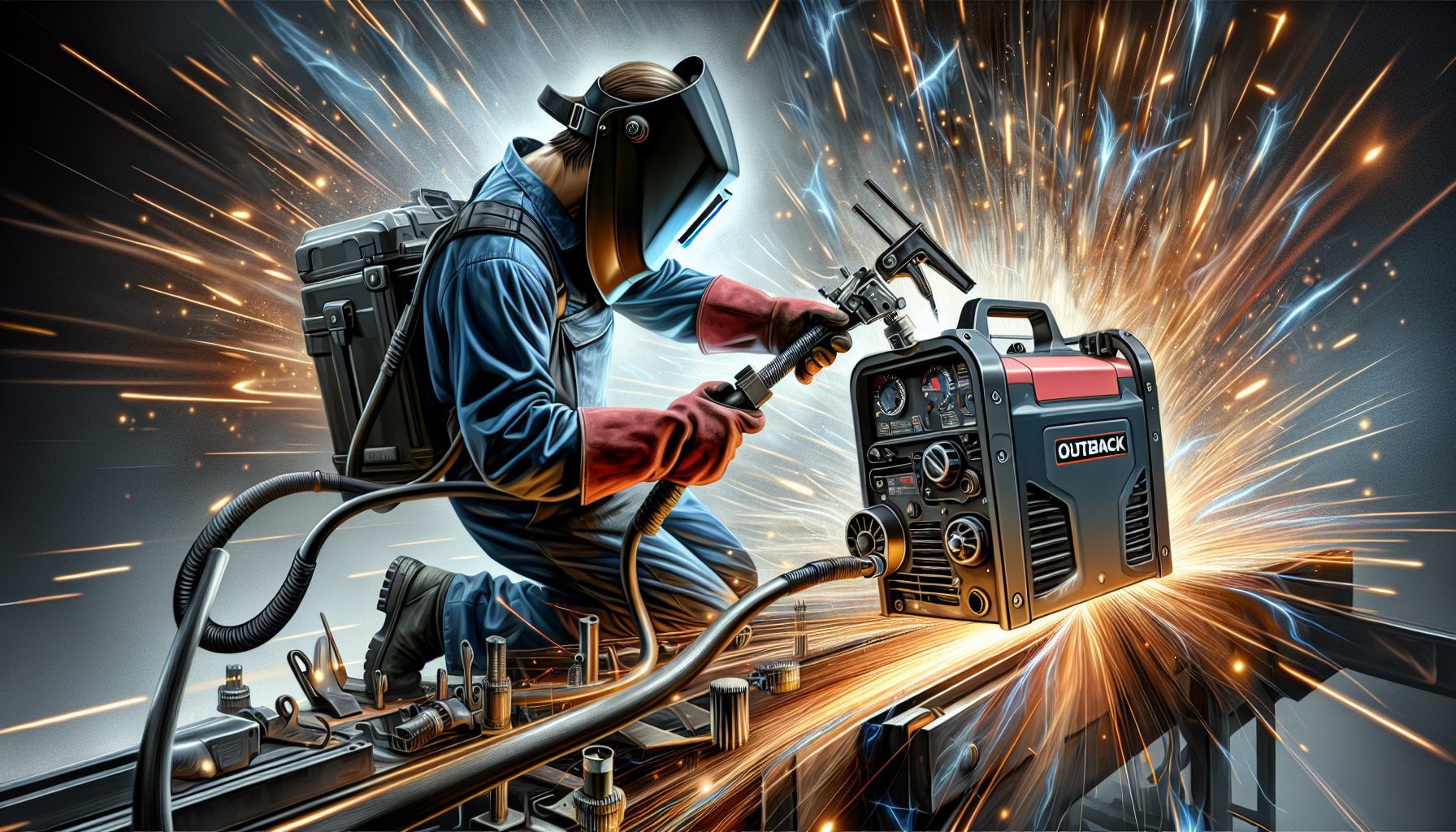In this article, we will explore the capabilities of various welding machines and the thickness of metals they can effectively handle. Welding machines play a crucial role in joining different metal pieces together, but not all machines are created equal. Understanding the limitations of these machines can help ensure successful welds and prevent costly mistakes. From lightweight machines designed for thinner metals to heavy-duty models capable of tackling thicker materials, we will provide a comprehensive overview of the welding machine options available and their respective metal thickness capacities. Let’s dive into the world of welding and discover the perfect machine for your specific needs.
FCAW Welding Machines
FCAW (Flux-Cored Arc Welding) machines are a popular choice for welding thin to medium thickness metals. They are typically capable of handling metals up to 1/2 inch in thickness. This makes them ideal for a variety of applications, such as sheet metal and light structural welding.
FCAW welding machines work by using a continuously fed consumable wire electrode that contains a flux core. The flux provides a shielding gas that protects the weld from atmospheric contamination, making it a versatile and efficient process.
One of the advantages of FCAW welding is that it allows for higher deposition rates compared to other welding processes. This means that you can weld thicker sections of metal in a shorter amount of time, increasing productivity.
MIG Welding Machines
MIG (Metal Inert Gas) welding machines are another popular choice for welding thin to medium thickness metals. They are capable of handling metals ranging from 24-gauge to 1/2 inch in thickness. This makes them suitable for a wide range of applications, including automotive, construction, and general fabrication.
MIG welding works by using a wire electrode that is continuously fed through the welding gun. The wire is heated and melts into the weld joint, creating a strong bond between the metals being joined. A shielding gas, typically a mix of argon and carbon dioxide, protects the weld from atmospheric contamination.
One of the benefits of MIG welding is that it is a relatively easy process to learn and use. It offers good control and produces clean, high-quality welds. MIG welding is commonly used in industries such as automotive manufacturing, where speed and efficiency are important factors.
TIG Welding Machines
TIG (Tungsten Inert Gas) welding machines are known for their ability to handle thin to thick metals. The thickness that can be welded depends on the machine’s amperage rating. TIG welding is particularly suitable for precision welding on stainless steel, aluminum, and other metals that require a high level of control and aesthetic appearance.
TIG welding works by using a non-consumable tungsten electrode. A separate filler metal can be used if needed. A shielding gas, typically argon or a mix of argon and helium, is used to protect the weld from atmospheric contamination.
One of the advantages of TIG welding is its ability to create clean, precise welds with excellent control over heat input. This makes it suitable for applications that require high-quality welds, such as aerospace and pharmaceutical industries.
Stick Welding Machines
Stick welding machines, also known as shielded metal arc welding (SMAW) machines, are able to handle a wide range of thicknesses. They are suitable for both thin and thick metals, depending on the electrode and machine’s amperage capacity.
Stick welding works by using a consumable electrode coated in flux. The flux creates a shielding gas that protects the weld from atmospheric contamination. The electrode is manually fed into the weld joint, creating a strong bond between the metals being joined.
One of the advantages of stick welding is its versatility and portability. It can be used in various environments, including outdoor and remote locations. Stick welding is commonly used in construction, maintenance, and repair applications.
Plasma Cutting Machines
Plasma cutting machines are primarily used for cutting metal rather than welding. However, they are capable of cutting metals of various thicknesses, including thick metals up to several inches in thickness.
Plasma cutting works by using a high-velocity jet of ionized gas, known as plasma, to melt and remove metal. The plasma is generated when a gas, typically compressed air, is passed through a small nozzle and electrically charged.
Plasma cutting offers several advantages over other cutting methods. It provides a clean, precise cut with minimal heat-affected zones. It is also faster than traditional cutting methods, making it ideal for industrial applications where speed and precision are important.
Submerged Arc Welding Machines
Submerged arc welding machines are specifically designed for welding thick metals. They are ideal for heavy welding applications, such as shipbuilding, structural steel fabrication, and pipeline construction. Submerged arc welding machines can handle metals typically above 1/2 inch in thickness.
Submerged arc welding works by using a consumable electrode and a granular flux. The flux is fed continuously onto the weld joint, covering it and creating a protective barrier from atmospheric contamination. The electrode is automatically fed into the weld joint, creating a deep and strong bond.
One of the advantages of submerged arc welding is its high deposition rate. It allows for fast and efficient welding of thick sections, increasing productivity. Submerged arc welding is commonly used in industries that require the joining of thick materials, such as oil and gas, construction, and heavy machinery manufacturing.
Resistance Spot Welding Machines
Resistance spot welding machines are primarily used for spot welding thin sheet metal. They are best suited for metals up to 1/8 inch in thickness. Resistance spot welding is commonly utilized in industries such as automotive manufacturing and the electronic industry.
Resistance spot welding works by using an electric current to heat and fuse two metal surfaces together. Two copper alloy electrodes are used to apply pressure and concentrate the heat at the desired joint. The heat generated melts the metal surfaces, creating a strong bond.
One of the advantages of resistance spot welding is its speed and efficiency. It allows for rapid joining of sheet metal parts, making it ideal for high-volume production. Resistance spot welding is widely used in the automotive industry for the assembly of car bodies and other components.
Resistance Seam Welding Machines
Resistance seam welding machines are specifically designed for welding long seams. They are ideal for thin to medium thickness metals and can handle metals commonly ranging from 22 to 12 gauge. Resistance seam welding is commonly used in industries such as automotive manufacturing, appliance production, and HVAC fabrication.
Resistance seam welding works by using two rotating wheel electrodes that apply pressure and electric current to the metal sheets being joined. The pressure and current create heat at the desired joint, melting and fusing the metal surfaces together.
One of the advantages of resistance seam welding is its ability to create continuous, leak-tight welds in a single pass. It ensures consistent quality and productivity in applications that require strong and reliable joints, such as fuel tanks and air ducts.
Gas Welding Machines
Gas welding machines, also known as oxy-fuel welding machines, are used for both welding and cutting operations. They are capable of handling a wide range of thicknesses, depending on the type of fuel gas used and the welding technique employed.
Gas welding works by using a fuel gas, such as acetylene, and oxygen to create a high-temperature flame. The flame is used to heat and melt the metals being joined, creating a strong bond. Gas welding can be used with a filler rod, known as fusion welding, or without a filler rod, known as autogenous welding.
One of the advantages of gas welding is its versatility. It can be used for various applications, including repair work, metal fabrication, and artistic welding. Gas welding is often preferred for small-scale welding and repairs due to its simplicity and affordability.
Stud Welding Machines
Stud welding machines are primarily used for fastening studs to metal surfaces. They are commonly used in construction, shipbuilding, and manufacturing industries. Stud welding machines can handle various thicknesses, depending on the type of stud welding used.
Stud welding works by using an arc of electricity to melt the base of the stud and the metal surface being joined. The molten metal forms a strong bond as it solidifies, creating a secure connection.
One of the advantages of stud welding is its ability to create strong, reliable joints quickly and efficiently. It allows for the rapid installation of studs, reducing labor costs and improving productivity. Stud welding is commonly used in applications where there is a need for secure fastening, such as steel framing, machinery assembly, and metal decking.
In conclusion, different welding machines are designed to handle different thicknesses of metals. FCAW welding machines and MIG welding machines are suitable for thin to medium thickness metals. TIG welding machines offer the capability to handle thin to thick metals with precision. Stick welding machines are versatile and can handle a wide range of thicknesses. Plasma cutting machines are primarily used for cutting metal, including thick metals. Submerged arc welding machines are ideal for thick metals in heavy welding applications. Resistance spot welding and resistance seam welding machines are suitable for thin sheet metals. Gas welding machines allow for a wide range of thicknesses and are suitable for small-scale welding and repairs. Stud welding machines are primarily used for fastening studs to metal surfaces. By understanding the capabilities of each welding machine, you can choose the right one for your specific application and achieve the desired welding results.


